The Helicopter Return Everest Base Camp Trek offers an exhilarating blend of high-altitude trekking and aerial exploration. Combining a scenic flight from Kathmandu to Lukla with a trek to the iconic Everest Base Camp, this unique experience allows adventurers to enjoy the majestic Himalayan landscapes. And for the return, a helicopter ride directly from Gorakshep to Kathmandu provides a captivating aerial perspective of the towering peaks. This convenient option not only saves time but also promises a truly unforgettable conclusion to an extraordinary journey. For those seeking to conquer the Everest region in style, this trek presents a compelling opportunity.
Good To Know
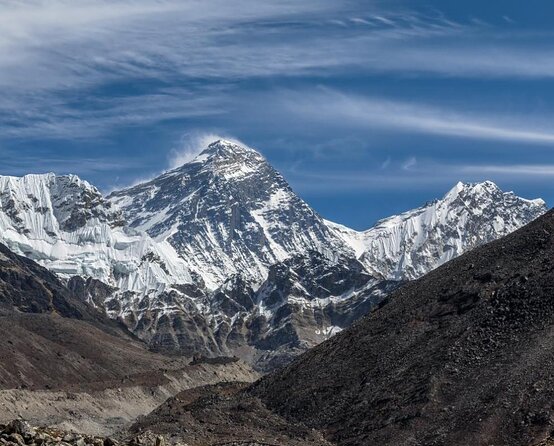
- The Everest Base Camp Trek offers an option for helicopter return from Gorakshep to Kathmandu, providing a convenient and scenic alternative to the trek back.
- The round-trip flight from Kathmandu to Lukla is priced at $400 per person during peak months, offering a scenic start to the trekking journey.
- The comprehensive trek package includes accommodations, a trekking guide, and necessary permits for exploring Sagarmatha National Park along the route.
- Trekkers can enjoy a range of cultural experiences, including visiting Sherpa family homes and interacting with locals in Namche Bazaar.
- The trek is designed for moderately fit individuals, with recommendations for proper training and essential gear to ensure a safe and rewarding high-altitude adventure.
Overview of the Trek

The Everest Base Camp Trekking route, starting from Kathmandu, has attracted adventurers since the 1920s, with legends like George Mallory, Sir Edmund Hillary, and Tenzing Norgay.
This trek showcases breathtaking natural scenery, rich Sherpa culture, and unique monasteries. Iconic landmarks along the way include Kala Patthar (5545m) for stunning views and Namche Bazaar for its history and culture.
Trekkers will be immersed in the region’s natural beauty and witness the vibrant Sherpa way of life as they journey through diverse villages, monasteries, and suspension bridges adorned with prayer flags.
Here are more great tours and experiences we've reviewed in Kathmandu
Trekking Route and Highlights
The trek begins with a scenic flight to Tenzing-Hillary Airport in Lukla, marking the start of the journey.
Trekkers will then wind through diverse villages like Nurning, Phakding, and Monjo, seeing the Sherpa culture.
Along the way, they’ll encounter iconic landmarks such as monasteries, chortens, prayer wheels, and suspension bridges adorned with prayer flags.
Exploring Sagarmatha National Park, they’ll marvel at the wildlife and breathtaking scenery.
The trek culminates at the base camp of the world’s highest mountain, Everest, providing a once-in-a-lifetime experience for adventurers seeking to connect with nature and the rich cultural heritage of the region.
Accommodation and Dining
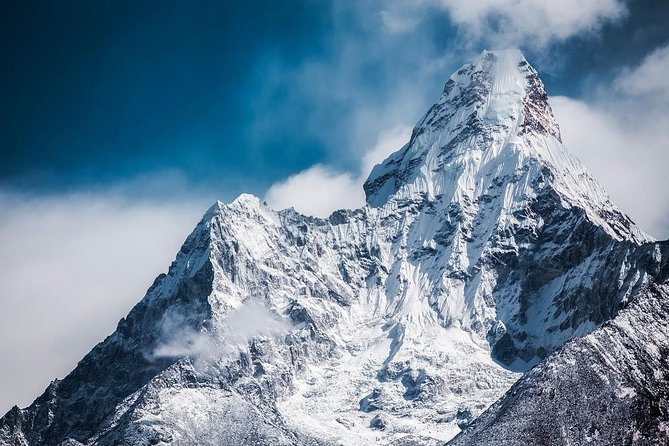
Throughout the Everest Base Camp trek, trekkers will find comfortable accommodation in tea houses along the way.
These locally-run lodges provide basic but clean rooms, often with shared bathroom facilities. Meals are served in the communal dining areas, where trekkers can enjoy Nepali and international cuisine.
The menu typically features hearty dishes like dal-bhat (lentils and rice), momos (dumplings), and Tibetan bread. Tea, coffee, and snacks are also readily available.
Dining in the tea houses is a wonderful way to experience the local culture and connect with other adventurers. The food is nourishing and the accommodations sufficient to recharge before the next day’s trek.
Transportation and Permits
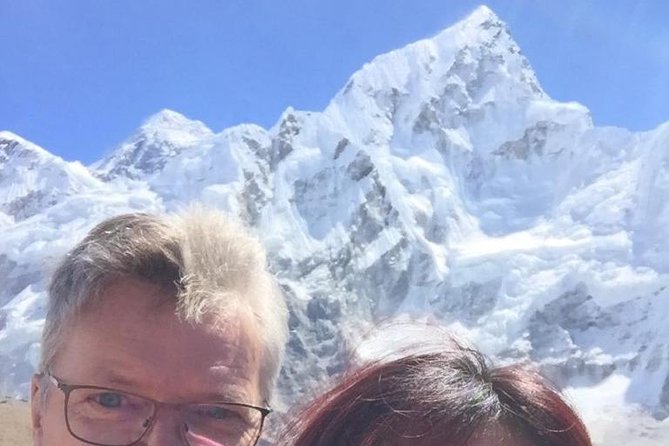
The trek to Everest Base Camp begins with a scenic flight to Tenzing-Hillary Airport in Lukla. This flight costs $400 per person during peak months like October, November, March, April, and May.
After the flight, trekkers will receive all necessary trekking permits to explore Sagarmatha National Park. The trek includes private transportation throughout the journey.
Travelers will need to pay locally for their lunch and dinner meals during the trek. The Everest Base Camp trek offers a comprehensive package, with costs for transportation, permits, and meals clearly outlined for a seamless experience.
Recommended Gear and Clothing
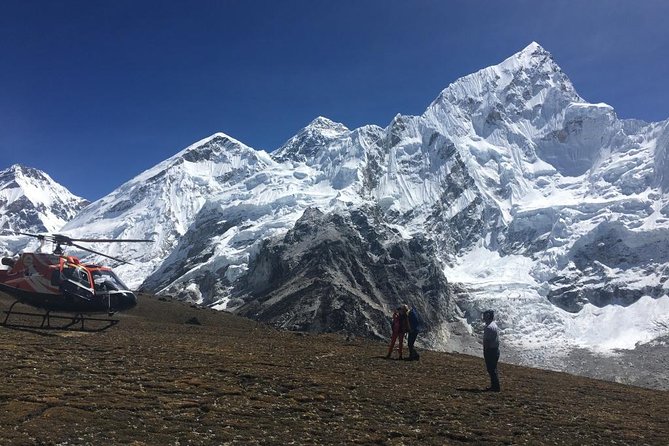
When trekking to Everest Base Camp, travelers should pack 4-5 pairs of quality socks and hand gloves. These items are crucial for maintaining warmth and comfort during the high-altitude trek.
The trek’s diverse terrain and changing weather conditions require proper gear to ensure a safe and enjoyable experience. Sturdy, well-broken-in hiking boots, layered clothing, and a warm down jacket are also recommended.
Plus, having a reliable water bottle, a headlamp, and sun protection like sunglasses and sunscreen can greatly enhance the trek.
Fitness and Preparation
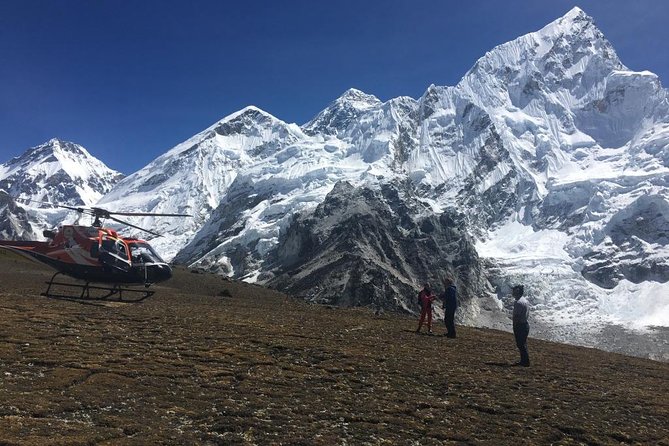
Trekking to Everest Base Camp requires a moderate level of fitness and preparation. The trek involves long days of hiking at high altitudes, with the highest point being Kala Patthar at 5,545 meters.
While the trek is suitable for most travelers, it’s crucial to train beforehand to build endurance and stamina. Recommended exercises include cardiovascular workouts, strength training, and hiking with a backpack.
Proper gear, such as high-quality hiking boots, warm clothing, and trekking poles, is also essential. Participants should familiarize themselves with the effects of altitude and be prepared to manage any health issues that may arise.
With the right preparation, the Everest Base Camp trek can be an unforgettable and rewarding experience.
Cultural Immersion and Experiences
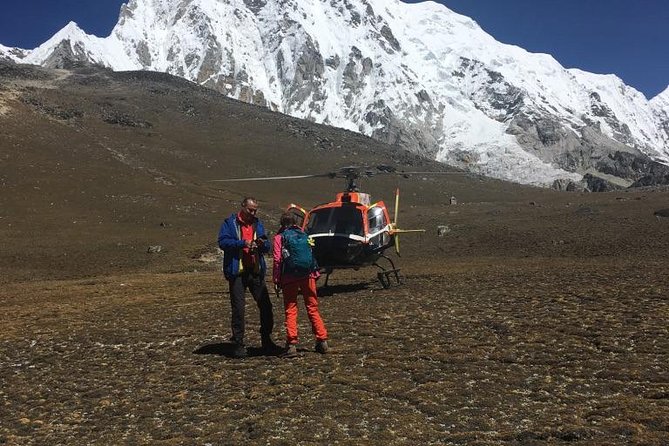
Immersed in the vibrant Sherpa culture, trekkers along the Everest Base Camp route gain intimate insights into the daily lives and traditions of these resilient mountain people.
They’ll encounter monasteries and chortens adorned with prayer wheels and fluttering prayer flags, witnessing the deep Buddhist faith that permeates Sherpa communities.
Stops in iconic Namche Bazaar allow opportunities to interact with locals, browse traditional handicrafts, and savor authentic Sherpa cuisine.
Trekkers may even have the chance to visit a family home, gaining a firsthand understanding of the Sherpa way of life.
This culture enriches the Everest Base Camp experience, leaving a lasting impression on those who undertake this epic journey.
Booking and Pricing Details
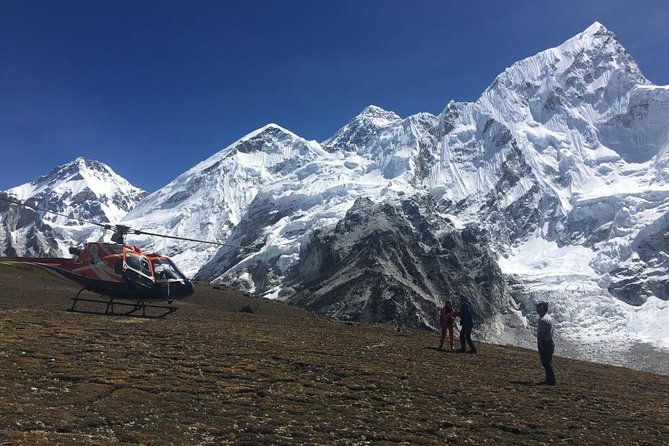
The Everest Base Camp trek package typically includes accommodations in tea houses, a trekking guide, and all necessary entry and trekking permits. Local payment is required for lunch and dinner.
The helicopter flight from Kathmandu to Lukla costs $400 per person (sharing) during peak months, while a special offer prices the trek at $949.05, down from $999.00, with free cancellation up to 24 hours before the experience.
The trek offers the following:
- Scenic flights to and from Lukla Airport.
- Exploration of diverse villages, monasteries, and cultural landmarks.
- Guided trekking through Sagarmatha National Park’s breathtaking scenery.
- Helicopter return from Gorakshep to Kathmandu.
Frequently Asked Questions
Can I Charge My Electronics During the Trek?
Trekkers can charge their electronics at the tea houses along the Everest Base Camp trek route, which have solar power or generator-powered charging stations for guest use. However, availability and capacity may vary at different stops.
What Is the Best Time of Year to Do This Trek?
The best time to do the Everest Base Camp trek is typically from October to November or March to May, when the weather is mild, and the views are clearest. These peak seasons offer the most favorable trekking conditions.
Is There Access to Wi-Fi or Internet During the Trek?
Access to Wi-Fi or internet during the Everest Base Camp trek is limited, as the trek takes place in remote mountain areas with minimal infrastructure. Travelers can expect sporadic connectivity at some tea houses and lodges along the route.
Can I Bring My Own Personal Porter or Guide?
Trekkers can bring their own personal porter or guide. However, the trek organizers typically provide a licensed guide, and using their services is generally recommended to ensure a safe and well-supported experience.
Is There an Option to Do the Trek Without a Guide?
It’s possible to do the Everest Base Camp trek without a guide, but it’s generally not recommended. Guides provide invaluable assistance with navigation, logistics, and cultural insights that can greatly enhance the trekking experience.
Sum Up
The Helicopter Return Everest Base Camp Trek offers an exceptional way to experience the grandeur of the Himalayas. The scenic flight, captivating trek, and helicopter return provide an unparalleled adventure, allowing trekkers to enjoy the Sherpa culture and witness the breathtaking peaks from both ground and air. This convenient option is a perfect conclusion to an unforgettable journey in the heart of the world’s highest mountains.
More Helicopter Tours in Kathmandu
More Tour Reviews in Kathmandu
Not for you? Here's more things to do in Kathmandu we have recnetly reviewed
- 2 Best Guided Tours In Jagat
- 20 Best 2 Day Tours In Kathmandu
- 20 Best 3 Day Tours In Kathmandu
- 20 Best 4 Day Tours In Kathmandu
- 8 Best Dining Experiences In Kathmandu
- 20 Best Full-Day Tours In Kathmandu
- 25 Best Helicopter Flights And Tours In Kathmandu
- 25 Best Helicopter Flights And Tours In Kathmandu
- 13 Best Massage And Relaxation Services In Kathmandu
- 5 Best Photography Experiences In Kathmandu
- 8 Best Dinner Tours In Kathmandu
- 17 Best Lunch Experiences In Kathmandu
